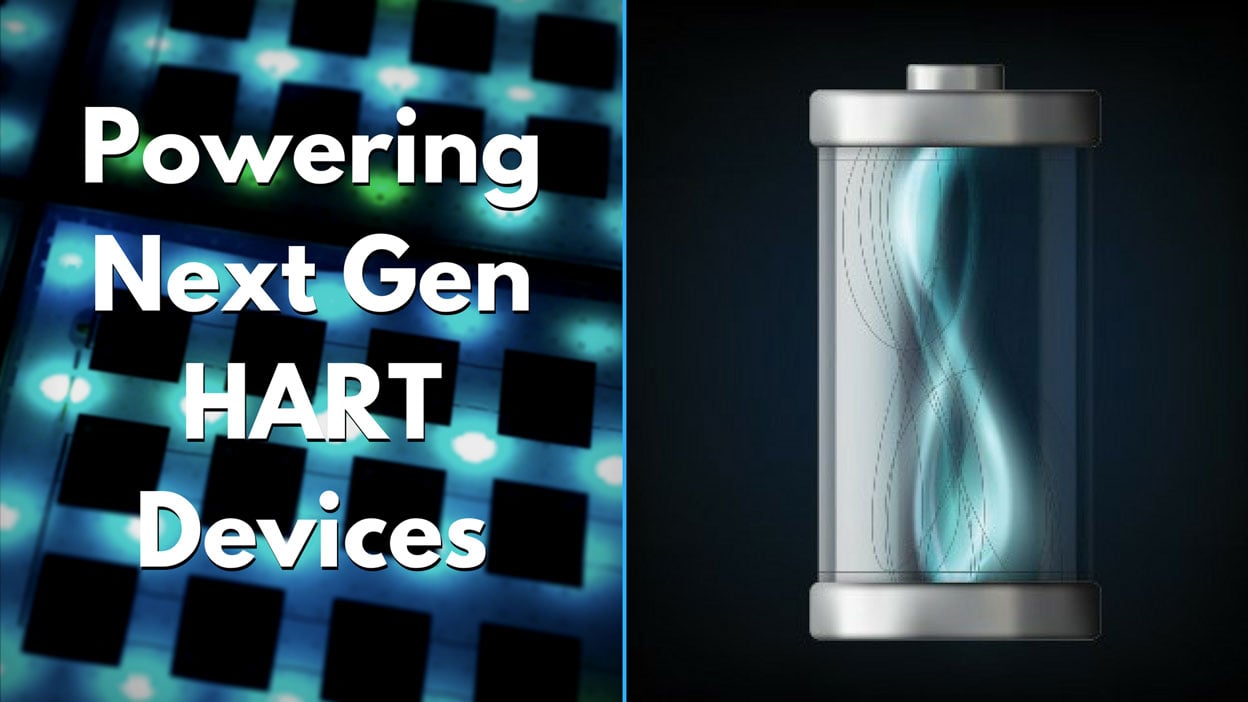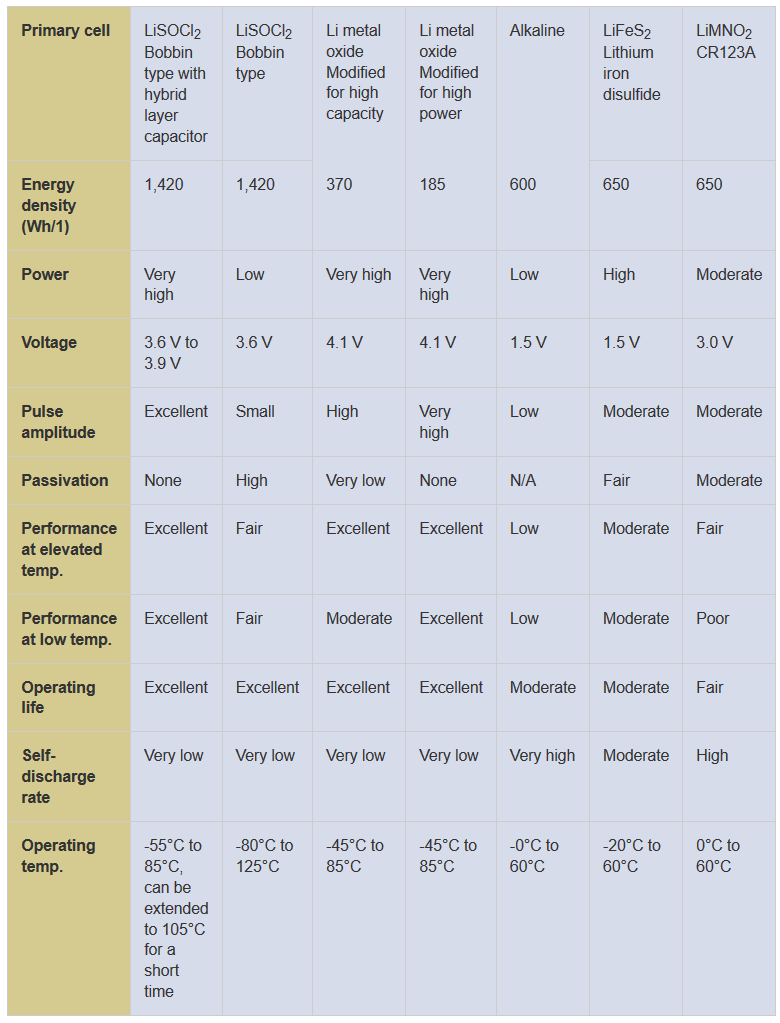This guest blog post was written by Sol Jacobs, vice president and general manager of Tadiran Batteries, has more than 30 years of experience in developing solutions for powering remote devices. His educational background includes a bachelor's degree in engineering and an MBA.
While continually evolving, the HART communications protocol remains strong after 30 years, with approximately 30 million HART-enabled devices installed and in service worldwide. The HART protocol remains the industry standard for applications ranging from process control to asset management and safety systems, machine-to-machine, and other supervisory control and data automation applications.
The Highway Addressable Remote Transducer (HART) protocol employs Bell 202 frequency shift keying (the same standard found in analog phone caller-ID technology) to superimpose digital signals on top of 4–20 mA analog signals, with the two channels working in tandem to provide a low-cost field communications solution that is easy to use and configure.

Traditional HART connectivity requires hardwiring, which is highly restrictive. Experts believe that nearly 85 percent of all installed HART-enabled devices are not currently connected. The main obstacle is expense; it costs $100 or more per foot to create a hardwired connection. This limitation becomes even more problematic for remote, environmentally sensitive locations, where logistical, regulatory, and permitting requirements create added layers of expense and complexity.
Recognizing that industrial automation could not be held back by proximity to analog wiring, the HART-IP protocol was developed, enabling IP-based networks to communicate via Wi-Fi (IEEE 802.11) or Ethernet (IEEE 802.3).
The development of HART-IP led to low-power communications protocols, such as WirelessHART and ZigBee, that use IEEE 802.15.4-approved radio signals to deliver high reliability in challenging environments. The WirelessHART protocol has created a huge opportunity for wireless, battery-operated sensors to seamlessly integrate with other intelligent HART devices to play an integral role in the emerging Industrial Internet of Things (IIoT). This is a critical step toward a future where “big data” analytics will increasingly manage transportation infrastructure, energy production, environmental monitoring, manufacturing, distribution, health care, and smart buildings. The WirelessHART protocol has enabled the rapid development of wireless mesh networks that combine multiple low-power sensors to form redundant, self-healing networks.
The ideal power supply
A remote wireless device is only as reliable as its power supply, which needs be optimized based on application-specific requirements. The vast majority of remote wireless devices that require long operating life are powered by primary (nonrechargeable) lithium batteries. However, certain applications may be suited for energy-harvesting devices used in conjunction with rechargeable lithium-ion (Li-ion) batteries that store the harvested energy.
Generally speaking, the more remote the application, the greater the need for an industrial-grade lithium battery. For example, inexpensive consumer-grade alkaline batteries can suffice in certain instances, especially for easily accessible devices that operate within a moderate temperature range (i.e., flashlights, television remote controllers, and toys). However, alkaline batteries are not well suited to long-term industrial applications due to inherent limitations, including low voltage (1.5 V or lower), a limited temperature range (0°C to 60°C), a high self-discharge rate that reduces life expectancy to two to three years, and crimped seals that may leak.
The low initial cost of a consumer-grade battery can also be highly misleading, as the cost of labor to replace a consumer-grade battery typically far exceeds that of the battery itself. For example, consider what it takes to replace batteries in a seismic monitoring system sitting on the ocean floor or in a stress sensor attached to a bridge abutment.
To judge whether a short-lived consumer-grade alkaline battery is a worthy investment, you must calculate the lifetime cost of the power supply. To be accurate, the calculation has to properly account for the cost of all labor and materials associated with future battery replacements.
When specifying an industrial-grade lithium battery, you need to consider numerous factors, including energy consumed in active mode (including the size, duration, and frequency of pulses); energy consumed in dormant mode (the base current); storage time (as normal self-discharge during storage diminishes capacity); thermal environments (including storage and in-field operation); equipment cut-off voltage (as battery capacity is exhausted, or in extreme temperatures, voltage can drop to a point too low for the sensor to operate); battery self-discharge rate (which can be higher than the current draw from average sensor use); and cost considerations. Industrial-grade lithium batteries are commonly specified when the following performance features are required:
- Reliability: The remote sensor is deployed in a hard-to-reach location where battery replacement is difficult or impossible, and data links cannot be interrupted by bad batteries.
- Long operating life: The self-discharge rate of the battery can be more than the device usage of the battery, so initial battery capacity must be as high as possible.
- Wide operating temperatures: A wide range is especially critical for extremely hot or cold environments.
- Small size: When a small form factor is required, the battery’s energy density needs to be as high as possible.
- Voltage: Higher voltage enables fewer cells to be required.
- Lifetime costs: Replacement costs over time must be taken into account.
Trade-offs are inevitable, so you need to prioritize your list of desired performance attributes.
Choosing among primary lithium batteries
Lithium battery chemistry is preferred for long-term deployments, because its intrinsic negative potential exceeds that of all other metals. Lithium is also the lightest nongaseous metal and has the highest specific energy (energy per unit weight) and energy density (energy per unit volume) of all available battery chemistries. Lithium cells, all of which use a nonaqueous electrolyte, have a normal operating current voltage that ranges between 2.7 V and 3.6 V. The absence of water allows lithium batteries to endure more extreme temperatures. Numerous primary lithium chemistries are available (table 1), including iron disulfide (LiFeS2), lithium manganese dioxide (LiMNO2), and lithium thionyl chloride (LiSOCl2) chemistry.
 Table 1. Numerous primary lithium chemistries are available.
Table 1. Numerous primary lithium chemistries are available.
Consumer-grade lithium iron disulfide (LiFeS2) cells are relatively inexpensive, and deliver the high pulses required to power a camera flash. These batteries have limitations, including a narrow temperature range of -20°C to 60°C, a high annual self-discharge rate, and crimped seals that may leak.
Lithium manganese dioxide (LiMNO2) cells, including the popular CR123A, provide a space-saving solution for cameras and toys, as a single 3-volt LiMNO2 cell can replace two 1.5-volt alkaline cells. LiMNO2 batteries can deliver moderate pulses, but suffer from low initial voltage, a narrow temperature range, a high self-discharge rate, and crimped seals.
Bobbin-type lithium thionyl chloride (LiSOCl2) batteries are particularly well suited for WirelessHART devices that draw low average daily current. Bobbin-type LiSOCl2 batteries offer the highest capacity and highest energy density of any lithium cell, along with an extremely low annual self-discharge rate—less than 1 percent per year—enabling certain low-power applications to operate without maintenance for up to 40 years. Bobbin-type LiSOCl2 batteries also deliver the widest possible temperature range (-80°C to 125°C) and have a glass-to-metal hermetic seal.
These unique attributes make bobbin-type LiSOCl2 batteries ideally suited for industrial applications, such as tank level monitoring and asset tracking, where remote sensors must endure extreme temperature cycling. A prime example is the medical cold chain, where wireless sensors are required to monitor the transport of frozen pharmaceuticals, tissue samples, and transplant organs at carefully controlled temperatures as low as -80°C. Certain bobbin-type LiSOCl2 batteries have been proven to operate successfully under prolonged test conditions at -100°C, which far exceeds the maximum temperature range of alkaline cells and consumer-grade lithium batteries.
Bobbin-type LiSOCl2 batteries are also used in virtually all meter transmitter units (MTUs) in advanced metering infrastructure/automatic meter reading (AMI/AMR) metering applications for water and gas utilities. These MTUs are often buried outside in underground pits and subjected to extreme temperatures. Extended battery life is essential to AMI/AMR metering applications, because any large-scale system-wide battery failure could create chaos by disrupting billing and customer service. To preempt this type of disruption, utility companies demand the use of bobbin-type LiSOCl2 batteries for their ability to operate for decades.
Battery operating life is largely influenced by the cell’s annual energy usage, along with its annual self-discharge rate. For this reason, many devices that use the WirelessHART protocol are designed to conserve energy by operating on a very low current. To further extended battery life, these devices operate mainly in a “sleep” mode that draws little or no current, periodically querying for the presence of data and awakening only if certain preset data thresholds are exceeded. It is not uncommon for more energy to be lost through annual battery self-discharge than through actual battery use.
When specifying a bobbin-type LiSOCl2 battery, be aware that battery operating life can vary significantly based on how the cell was manufactured and the quality of its raw materials. For example, the highest-quality bobbin-type LiSOCl2 cells can have a self-discharge rate as low as 0.7 percent annually, thus retaining nearly 70 percent of their original capacity after 40 years. By contrast, a lesser-quality bobbin-type LiSOCl2 cell can have an annual self-discharge rate as high as 3 percent, causing nearly 30 percent of available capacity to be lost every 10 years from annual self-discharge.
High pulse requirements
Standard bobbin-type LiSOCl2 cells are not designed to deliver high pulses, which can be overcome by combining a standard bobbin-type LiSOCl2 cell with a hybrid layer capacitor (HLC). The standard LiSOCl2 cell delivers the low background current needed to power the device during sleep mode, while the HLC works like a rechargeable battery to store and deliver the high pulses needed during data interrogation and transmission.
Alternatively, supercapacitors can be used to store high pulse energy in an electrostatic field. Supercapacitors are used in many consumer products, but are generally not recommended for industrial applications because of inherent performance limitations, including an inability to provide long-term power, linear discharge qualities that do not allow the use of all available energy, low capacity, low energy density, and high annual self-discharge rates (up to 60 percent per year). Supercapacitors linked in series also require cell-balancing circuits that draw additional current.
Opportunities for energy harvesting
A growing number of HART-IP connected devices are proving to be well suited for energy harvesting, with Li-ion rechargeable batteries being used to store the harvested energy. Several considerations go into the decision to deploy an energy-harvesting device, including the reliability of the device and its energy source, the expected operating life of the device, environmental parameters, size and weight restrictions, and the total cost of ownership. Photovoltaic cells are commonly used in HART-enabled applications. In certain situations, energy can also be harvested from equipment vibration or from radio frequency/electromagnetic signals.
Consumer-grade rechargeable Li-ion cells may be a sufficient solution if the device is easily accessible and needs to operate for no more than five years and 500 recharge cycles within a moderate temperature range (0°C to 40°C). However, if the wireless device will be used in a remote location or in extreme temperatures, then the application will likely require an industrial-grade Li-ion battery that can operate for up to 20 years and 5,000 full recharge cycles, with an expanded temperature range of -40°C to 85°C (table 2).
 Table 2. For remote locations or extreme temperatures, industrial-grade lithium-ion batteries are usually required.
Table 2. For remote locations or extreme temperatures, industrial-grade lithium-ion batteries are usually required.
Another major advantage of an industrial-grade rechargeable Li-ion cell is its ability to deliver the high pulses (5 A for a AA-size cell) to support advanced, two-way communications. These ruggedly constructed cells also have a hermetic seal that is superior to the crimped seals on consumer-grade rechargeable batteries, which may leak.
Foundation of IIoT
The development of the HART-IP and WirelessHART communications protocols have created a growing need for battery-powered solutions that can operate without maintenance for decades and provide reliable, secure, and seamless interoperability between legacy technologies and the latest generation of wireless devices. These HART-enabled technologies form a critical foundation for the IIoT, which promises to revolutionize modern industrial automation.
Technology convergence and growing requirements for interoperability are currently being supported by the most recent bobbin-type LiSOCl2 batteries, including hybrid cells that can deliver the high pulses required for advanced, two-way communications. There is also growing demand for industrial-grade rechargeable lithium-ion batteries that offer a long-term power supply for energy-harvesting applications. Together, these advanced battery chemistries offer a wide range of reliable, long-term power design options for HART-connected devices.
About the Author Sol Jacobs, vice president and general manager of Tadiran Batteries, has more than 30 years of experience in developing solutions for powering remote devices. His educational background includes a bachelor's degree in engineering and an MBA.
Sol Jacobs, vice president and general manager of Tadiran Batteries, has more than 30 years of experience in developing solutions for powering remote devices. His educational background includes a bachelor's degree in engineering and an MBA.
A version of this article also was published at InTech magazine.



